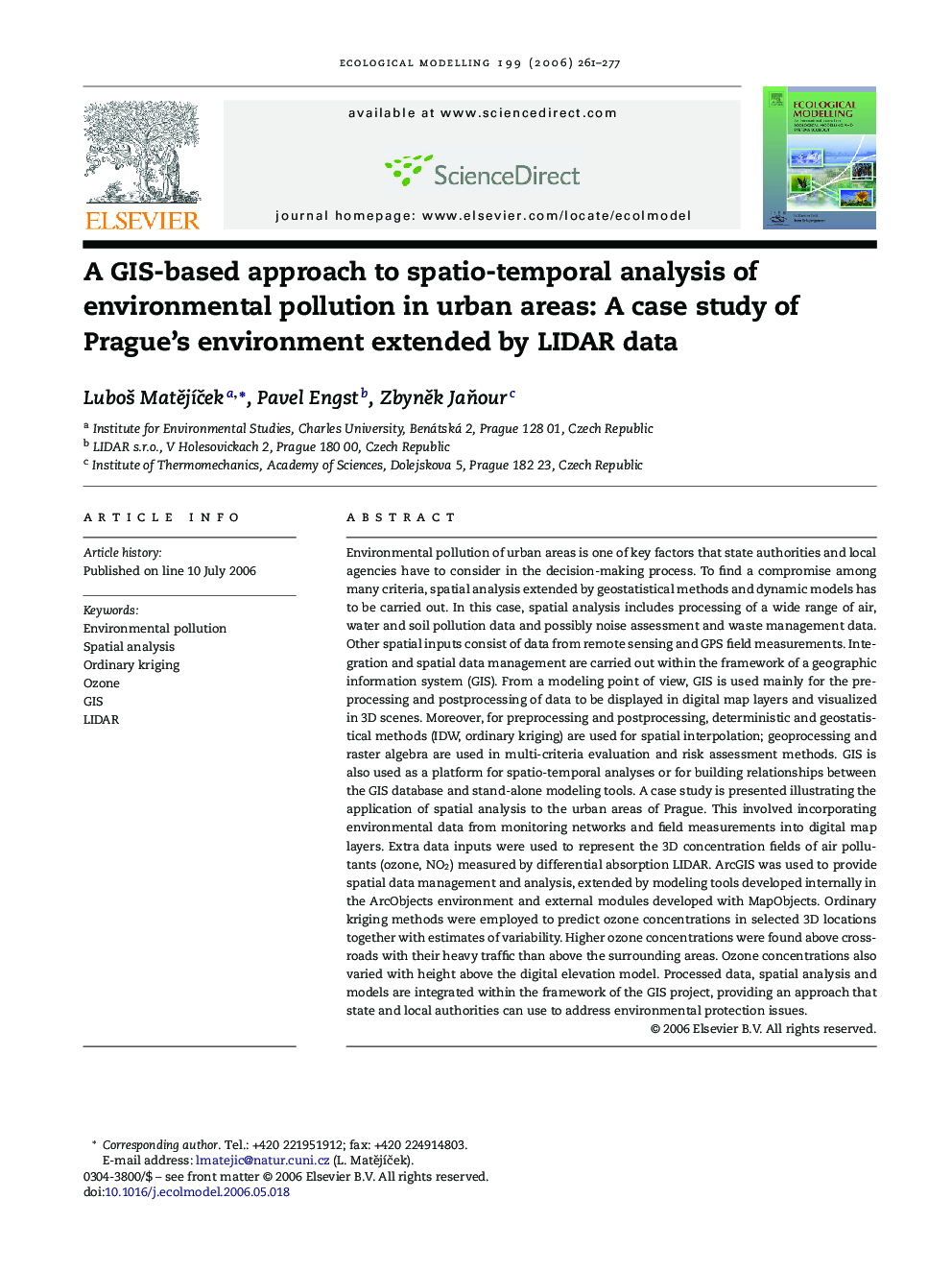| کد مقاله | کد نشریه | سال انتشار | مقاله انگلیسی | نسخه تمام متن |
|---|---|---|---|---|
| 4378946 | 1303500 | 2006 | 17 صفحه PDF | دانلود رایگان |

Environmental pollution of urban areas is one of key factors that state authorities and local agencies have to consider in the decision-making process. To find a compromise among many criteria, spatial analysis extended by geostatistical methods and dynamic models has to be carried out. In this case, spatial analysis includes processing of a wide range of air, water and soil pollution data and possibly noise assessment and waste management data. Other spatial inputs consist of data from remote sensing and GPS field measurements. Integration and spatial data management are carried out within the framework of a geographic information system (GIS). From a modeling point of view, GIS is used mainly for the preprocessing and postprocessing of data to be displayed in digital map layers and visualized in 3D scenes. Moreover, for preprocessing and postprocessing, deterministic and geostatistical methods (IDW, ordinary kriging) are used for spatial interpolation; geoprocessing and raster algebra are used in multi-criteria evaluation and risk assessment methods. GIS is also used as a platform for spatio-temporal analyses or for building relationships between the GIS database and stand-alone modeling tools. A case study is presented illustrating the application of spatial analysis to the urban areas of Prague. This involved incorporating environmental data from monitoring networks and field measurements into digital map layers. Extra data inputs were used to represent the 3D concentration fields of air pollutants (ozone, NO2) measured by differential absorption LIDAR. ArcGIS was used to provide spatial data management and analysis, extended by modeling tools developed internally in the ArcObjects environment and external modules developed with MapObjects. Ordinary kriging methods were employed to predict ozone concentrations in selected 3D locations together with estimates of variability. Higher ozone concentrations were found above crossroads with their heavy traffic than above the surrounding areas. Ozone concentrations also varied with height above the digital elevation model. Processed data, spatial analysis and models are integrated within the framework of the GIS project, providing an approach that state and local authorities can use to address environmental protection issues.
Journal: Ecological Modelling - Volume 199, Issue 3, 1 December 2006, Pages 261–277